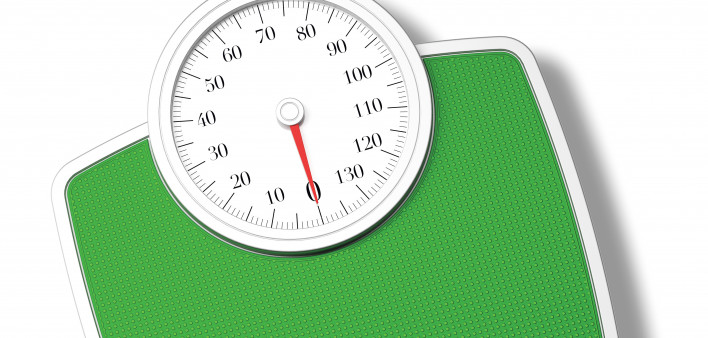Among people with HIV who switch their antiretroviral (ARV) regimen to one based on an integrase inhibitor, their subsequent pace of weight gain differs based on whether they were previously taking a non-nucleoside reverse transcriptase inhibitor (NNRTI) or a protease inhibitor.
In a recent study, the rate of weight gain increased for those who had taken an NNRTI-based regimen before switching to an integrase inhibitor–based regimen, whereas this rate slowed for those who had taken a protease inhibitor–based regimen. Among those who switched from an NNRTI, weight gain was steepest for women, nonwhites and people age 50 and older.
John Koethe, MD, of Vanderbilt University Medical Center, presented findings at the 2020 Conference on Retroviruses and Opportunistic Infections in Boston of a study of people with HIV who switched to an integrase inhibitor–based ARV regimen from either an NNRTI-based or protease inhibitor–based regimen.
The study population was drawn from 17 cohorts included in the multisite North American AIDS Cohort Collaboration on Research and Design. To be included in the study cohort, individuals needed to have maintained a viral load below 1,000 on their initial regimen for more than two years and to have maintained such a low viral load for an additional two years following their switch to an integrase inhibitor.
The study authors adjusted the weight-gain data to account for differences in the cohort members’ age, sex, race, cohort site, mode of HIV acquisition, calendar year, CD4 count and body mass index (BMI) at the time of their regimen switch.
Of the 870 people with HIV included in the cohort, 83% were men, and 59% were white. The median age was 50 years old, the median CD4 count was 620 and the median BMI was 26 (between 25 and 29.9 indicates overweight).
Of the 527 people who switched from a protease inhibitor, 285 switched to raltegravir, 95 switched to dolutegravir and 146 switched to elvitegravir. Of the 343 people who switched from an NNRTI, a respective 146, 81 and 117 switched to raltegravir, dolutegravir and elvitegravir.
Raltegravir is sold under the branded name Isentress. Dolutegravir is sold under the branded name Tivicay and is included in Triumeq (dolutegravir/abacavir/lamivudine), Dovato (dolutegravir/lamivudine) and Juluca (dolutegravir/rilpivirine). Elvitegravir is sold under the branded name Vitekta and is included in Stribild (elvitegravir/cobicistat/tenofovir disoproxil fumarate/emtricitabine) and Genvoya (elvitegravir/cobicistat/tenofovir alafenamide/emtricitabine). This study, however, ran from 2007 to 2014, before the introduction of Dovato, Juluca or Genvoya.
During the two years prior to the switch, those who switched from an NNRTI gained 1.39 pounds per year, a rate that increased to 2.49 pounds per year during the two years after their switch to an integrase inhibitor. This increase in the weight-gain rate was statistically significant, meaning it is unlikely to have been driven by chance.
When looking at the changes in the rate of weight gain based on individual integrase inhibitors, the only statistically significant increase in the rate occurred among people who switched from an NNRTI to dolutegravir. Their pre-switch weight-gain rate was 1.85 pounds per year, and their post-switch rate was 3.81 pounds per year.
By stark contrast, among those who switched from a protease inhibitor, their pre-switch weight gain rate was 1.76 pounds per year, and their post-switch rate was lower, at 0.75 pounds per year. Among those who switched to dolutegravir, the pre- and post-switch weight-gain rates were a respective 1.85 pounds per year and a loss of 0.09 pounds per year. Among those who switched to Isentress, the corresponding respective figures were 1.63 pounds per year and 0.37 pounds per year. And among those who switched to elvitegravir, the weight-gain rate increased, from 1.23 pounds per year to 1.96 pounds per year.
The weight-gain rate shifts for those switching from protease inhibitors were all statistically significant.
The study authors further broke down their results by sex, race and age. Only the statistically significant shifts in the weight-gain rate are mentioned hereafter.
Among women switching from an NNRTI, the pre-switch weight-gain rate was 0.31 pounds per year and the post-switch rate was 3.48 pounds per year. Among men switching from an NNRTI, the weight-gain rate increased from 1.59 pounds per year to 2.29 pounds per year. Among men switching from a protease inhibitor, the weight-gain rate decreased from 1.70 pounds per year to 0.66 pounds per year.
Among nonwhite people, switching from an NNRTI led to an increase in the weight-gain rate from 1.68 pounds per year to 4.48 pounds per year, and switching from a protease inhibitor led to a decrease from 2.29 pounds per year to 0.97 pounds per year. Among white people, switching from a protease inhibitor led to a decrease from 1.34 pounds per year to 0.55 pounds per year.
There was no statistically significant shift in weight gain based on the initial ARV regimen among people younger than 50 years old. However, among people age 50 and older, switching from an NNRTI meant an increase in the weight-gain rate from 0.46 pounds per year to 3.04 pounds per year, and switching from a protease inhibitor meant a decrease in the weight-gain rate from 1.54 pounds per year to 0.09 pounds per year.
The study authors concluded that their findings may be a reflection of ways that different ARV classes and individual drugs can affect body-weight regulation and that these differences are not limited to affecting just those who start HIV treatment for the first time.







Comments
Comments